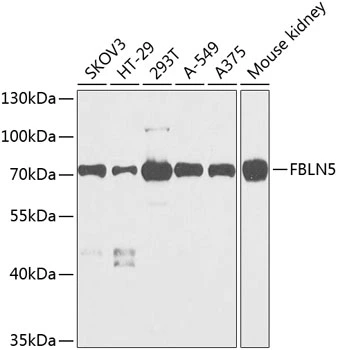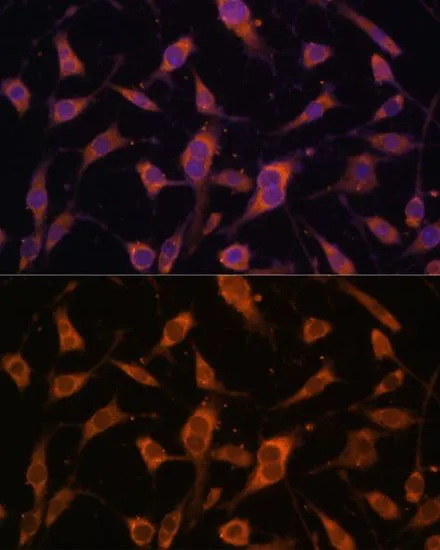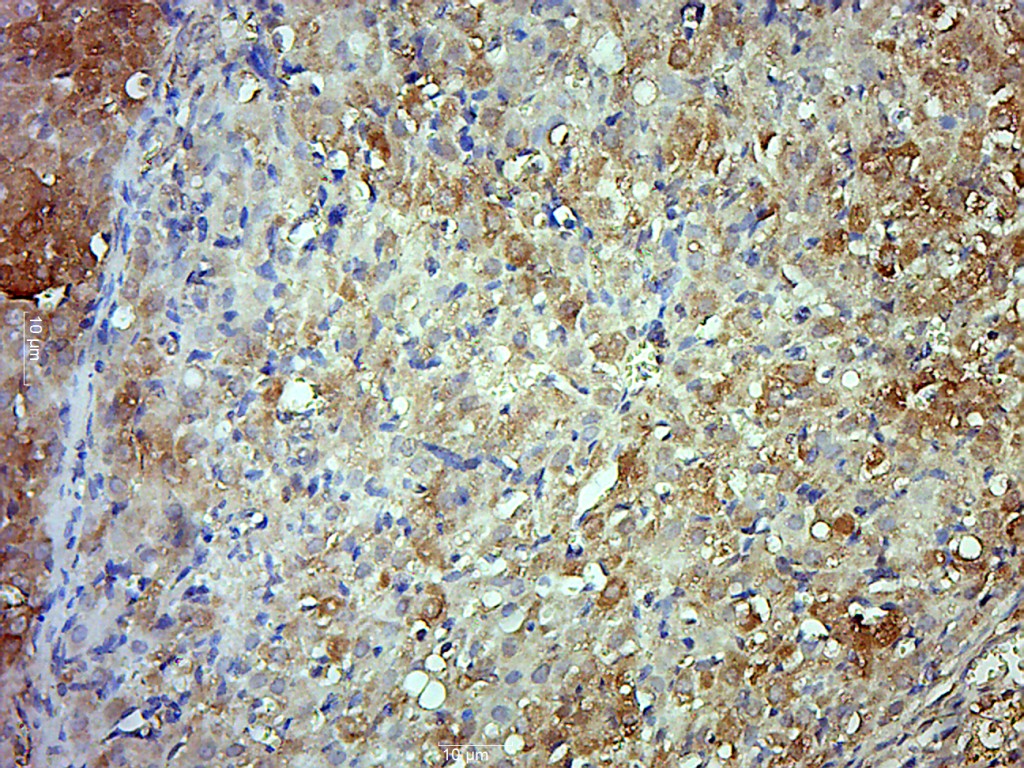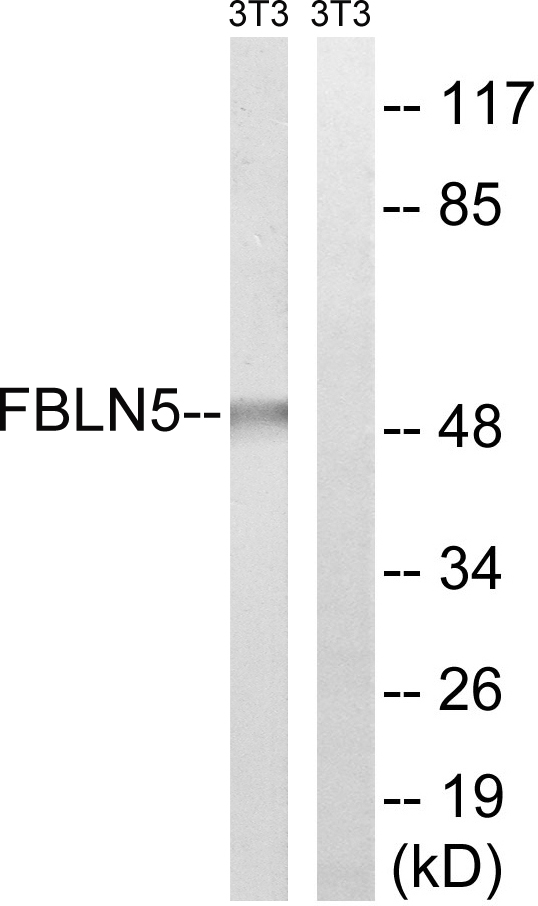
WB analysis of various sample lysates using GTX64424 Fibulin 5 antibody. Dilution : 1:1000 Loading : 25microg per lane
Fibulin 5 antibody
GTX64424
ApplicationsImmunoFluorescence, Western Blot, ImmunoCytoChemistry
Product group Antibodies
TargetFBLN5
Overview
- SupplierGeneTex
- Product NameFibulin 5 antibody
- Delivery Days Customer9
- Application Supplier NoteWB: 1:500 - 1:2000. ICC/IF: 1:50 - 1:100. *Optimal dilutions/concentrations should be determined by the researcher.Not tested in other applications.
- ApplicationsImmunoFluorescence, Western Blot, ImmunoCytoChemistry
- CertificationResearch Use Only
- ClonalityPolyclonal
- ConjugateUnconjugated
- Gene ID10516
- Target nameFBLN5
- Target descriptionfibulin 5
- Target synonymsADCL2, ARCL1A, ARMD3, CMT1H, DANCE, EVEC, FIBL-5, HNARMD, UP50, fibulin-5, developmental arteries and neural crest EGF-like protein, embryonic vascular EGF-like repeat-containing protein, testis tissue sperm-binding protein Li 75n, urine p50 protein
- HostRabbit
- IsotypeIgG
- Protein IDQ9UBX5
- Protein NameFibulin-5
- Scientific DescriptionThe protein encoded by this gene is a secreted, extracellular matrix protein containing an Arg-Gly-Asp (RGD) motif and calcium-binding EGF-like domains. It promotes adhesion of endothelial cells through interaction of integrins and the RGD motif. It is prominently expressed in developing arteries but less so in adult vessels. However, its expression is reinduced in balloon-injured vessels and atherosclerotic lesions, notably in intimal vascular smooth muscle cells and endothelial cells. Therefore, the protein encoded by this gene may play a role in vascular development and remodeling. Defects in this gene are a cause of autosomal dominant cutis laxa, autosomal recessive cutis laxa type I (CL type I), and age-related macular degeneration type 3 (ARMD3). [provided by RefSeq, Jul 2008]
- Storage Instruction-20°C or -80°C,2°C to 8°C
- UNSPSC12352203




![IHC-P analysis of human colon cancer (left) and breast cancer (right) using GTX83040 Fibulin 5 antibody [1G6A4].](https://www.genetex.com/upload/website/prouct_img/normal/GTX83040/GTX83040_20170912_IHC-P_w_23061322_376.webp)



